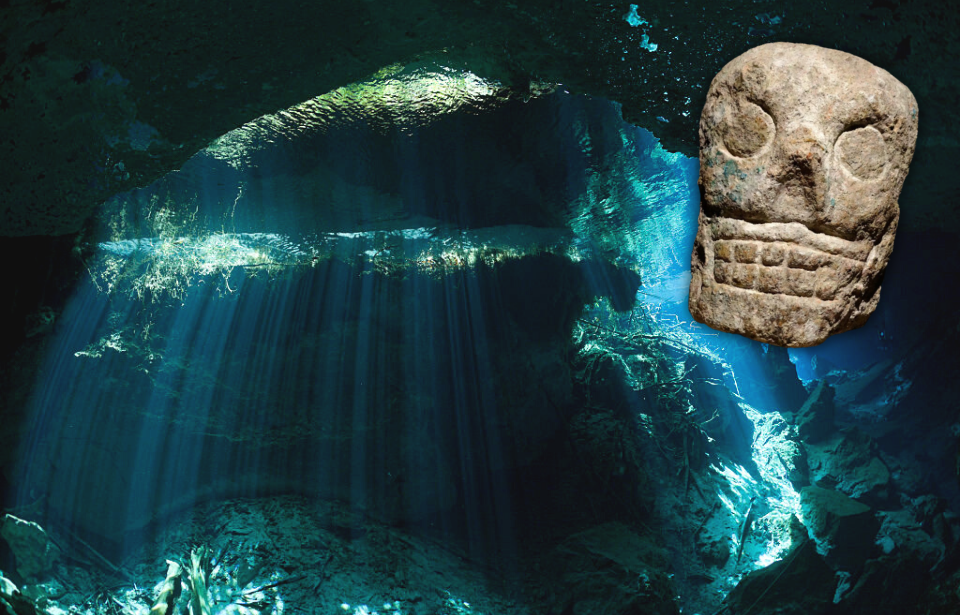The word “Cenote” translates to “hole with water” in English. But this translation barely scratches the surface of what lies beneath the sacred waters of Mexico’s cenotes. The ancient Mayans incorporated cenotes into their mythologies and religion, in which they served as sacred ritual sites for human sacrifices. Today, the bodies of victims remain buried deep along the pitch-black cave floors. Would you dare to take a dip in these hauntingly beautiful pools?
How are cenotes formed?
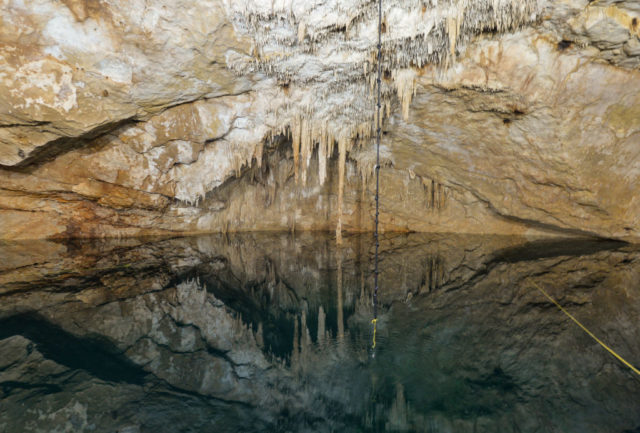
Cenotes can be found throughout Mexico’s Yucutan Peninsula. Formed over thousands of years, these vast sinkholes are fed by groundwater and ocean water that travels through underground channels. Cenotes are made from limestone that formed beneath the Yucutan Penisula thousands of years ago. They remain hidden underground until the limestone gives way and the collapse opens a sinkhole leading directly into the underground cave system.
The Mayans used cenotes for sacrifices
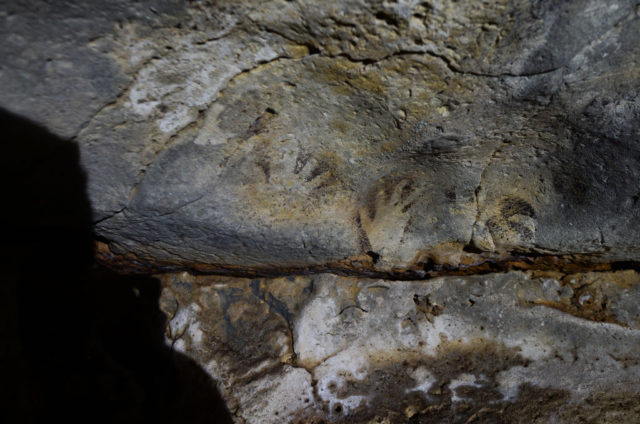
The ancient Mayans who settled the Yucutan had great respect for the cenotes, not only culturally but also as a means of survival since few lakes or streams were nearby. They believed cenotes were the home of the Mayan god Chac Mool, who was reborn as a jaguar at sunset to spread fear.
In order to keep the god from terrorizing cities and villages, offerings of pots, precious stones, animals, and even human sacrifices were made. At the Sacred Cenote of Chichen Itzá, archeologists have discovered the remains of 200 bodies of men, women, and children who were likely sacrificed by the Mayans.
Cenotes hold the key to ancient civilizations
Other skeletons found pre-date the Mayan period, such as the Eve of Naharon remains. Eve was discovered in the Sistema Naranjal cenote in 2001, and carbon dating has proven that she lived 13,600 years ago, making her skeleton some of the oldest evidence of human habitation discovered in the region.
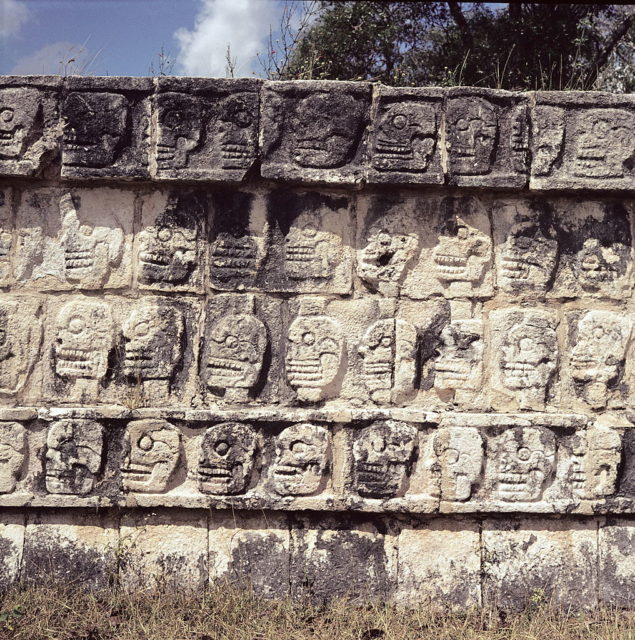
There are at least 6,000 known cenotes in the Yucutan. One of the most well-known is the Sagrado Cenote (or Sacred Cenote) at the UNESCO World Heritage Site Chichen Itzá. When American archeologist Edward Herbert Thompson discovered the ruins of Chichen Itzá in 1904, he began dredging the Sacred Cenote.
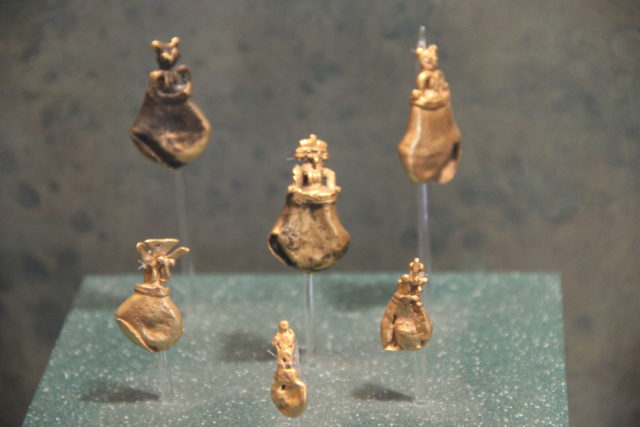
Thompson recovered countless gold offerings and skeletal remains of sacrificial victims which confirmed a long-suspected legend of the “Cult of the Cenote.” They threw offerings and helpless victims into the cenote as offerings to a sacred deity. Today, any artifacts or remains still within the Sacred Cenote are protected by the UNESCO Convention on the Protection of the Underwater Cultural Heritage.
Top three cenotes to visit
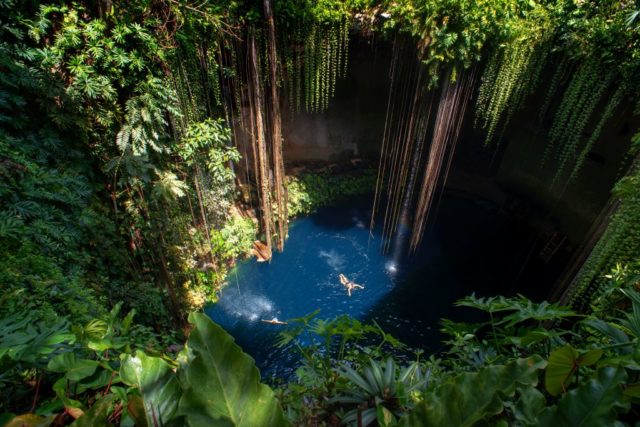
Despite their spooky history – and the potential for stumbling upon a skull or two – cenotes have become a massive attraction for adrenaline-seeking tourists looking to cool off and explore the hauntingly beautiful underwater caves. Consider putting these three stunning cenotes at the top of your bucket list!
Ik-Kil
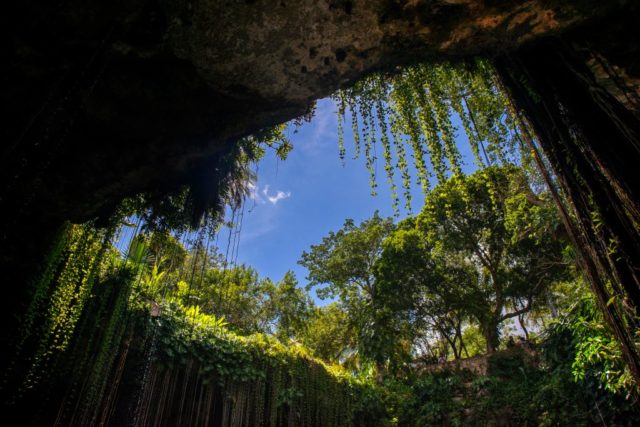
The Ik-Kil Cenote, not far from the ruins of Chichen Itzá, is one of the most stunning places in the Yucutan Peninsula. The entrance to Ik-Kil features a sheer vertical drop into the stunning crystal blue water below. The pool is roughly 40 meters deep and offers perfect conditions for swimming and snorkeling.
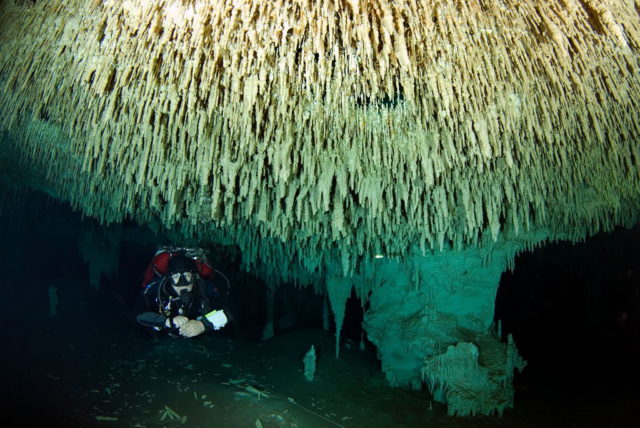
Tajma Ha
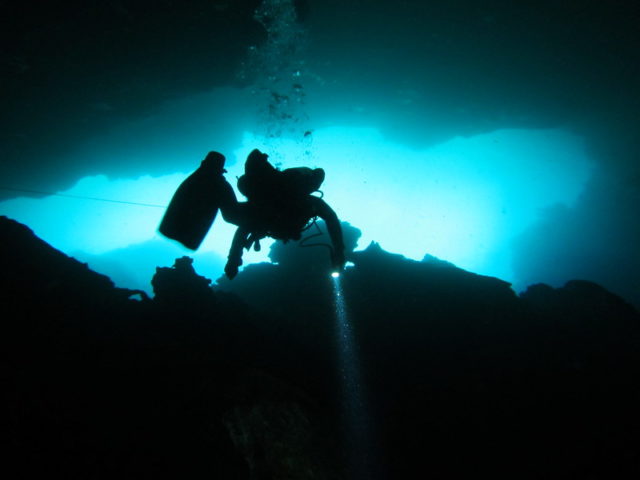
The Cenote Tajma Ha was named after the Taj Mahal due to its incredible “sugarbowl” ceiling – an expansive opening to the cavern that is known for incredible sunlight that creates an underwater “laser show.” The Tajma Ha (“Ha” is Mayan for “water”) is perfect for divers who want to experience the unbelievable ecosystems of cenotes, including tunnels where salt and fresh water meet to create a “halocline.”
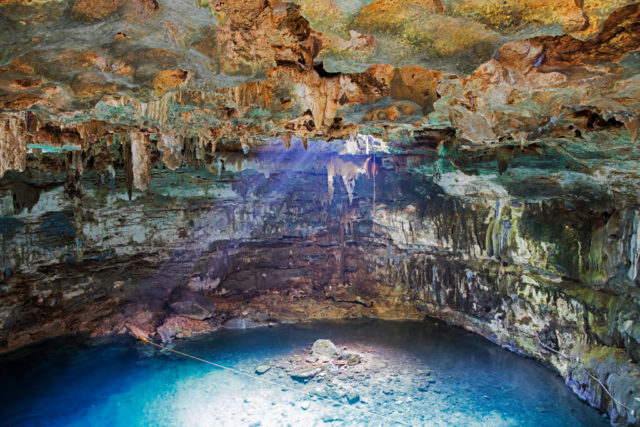
Dos Ojos
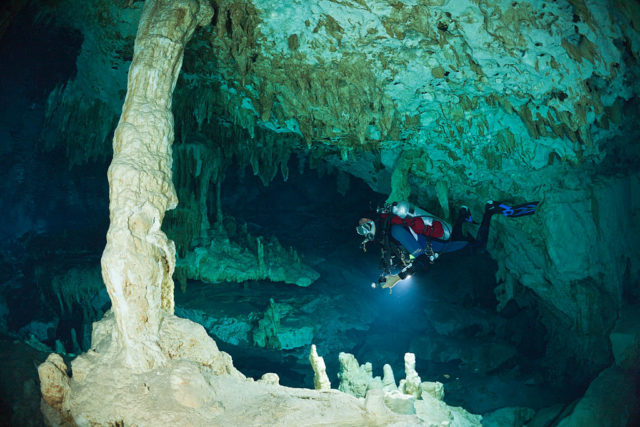
Cenote Dos Ojos, Spanish for “two eyes,” is home to one of the largest underwater cave systems in the world. This cenote gets its name from the two 70-meter sinkholes that are connected by a massive underwater passageway. The entire cave system is 61 kilometers long (roughly 38 miles). The size and depth of Dos Ojos make it perfect for diving, and the clear water is perfect for snorkeling.
More from us: Desert of the Lions, Swallowed up by Mexico City
Whether you are an adrenaline junkie looking for your next vacation destination, or an amateur archeologist hoping to score the next big discovery – the spooky, sublime, and sacred all converge inside Mexico’s cenotes.
